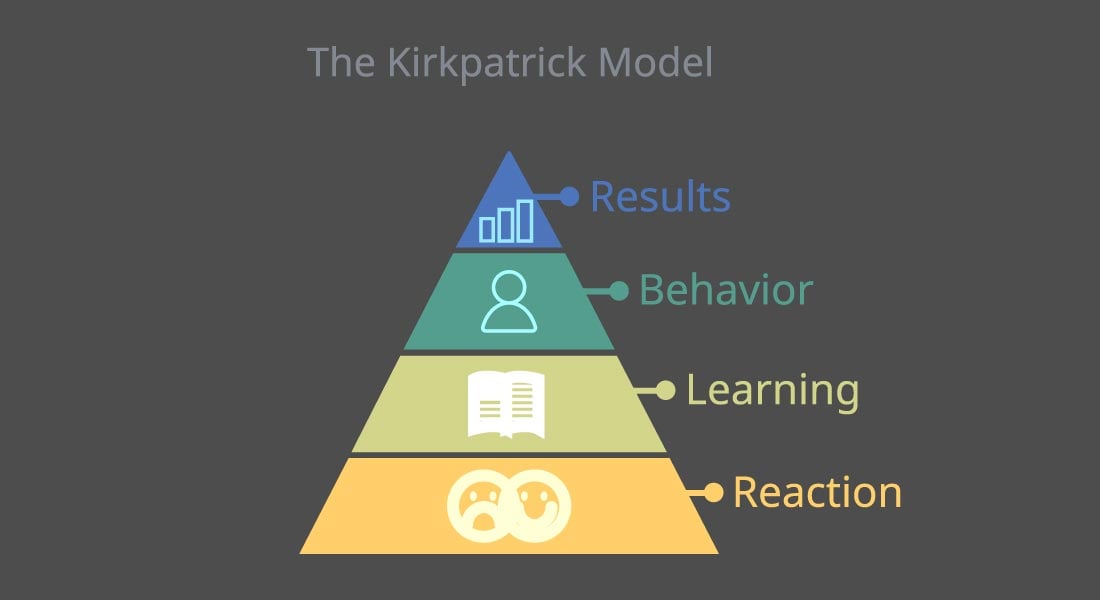5 Parameters of Evaluating Online Training Impact & Effectiveness

You devote countless hours to fine-tuning your online training strategy and rolling out your new courses; but how well are these courses really serving your performance goals and business objectives? One of the many benefits of online training is that it allows you to collect valuable feedback about the pros and cons of any given course. Based on this, you can modify or change your content to increase the value of your course. The evaluation of training impact and effectiveness is vital for the continuous improvement of your training program. This evaluation makes sure that your training always remains relevant and that you get the most out of your training budget.
Forming an evaluation strategy is essential for the long-term success of your training program. However, learners can easily become overwhelmed by many loosely strung questions. If you want your evaluation to give you meaningful results, you need to keep it crisp, concise, and easy enough to not be a burden for your learners to complete. Below are 5 parameters on which you can base your evaluation strategy to precisely measure the impact and effectiveness of your training:
1. Employee Satisfaction
Seeking employee feedback about their user experience is one of the most effective ways to evaluate your training content. Feedback will enable you to find out which aspects of your corporate e-learning strategy may need fine-tuning, and which areas are serving their intended purpose. Ask questions relating to course accessibility, content, structure, visual elements, and interactivity to gauge overall employee satisfaction. Ask your learners what they feel they gained from the training, and if they would like to see changes made to any of the e-learning modules.
2. Knowledge Transfer
The most appropriate method to evaluate levels of knowledge acquisition and retention is employee assessment and testing. After all, if information hasn’t been retained, then the online training you are currently using may not be a worthwhile investment. Testing your employees will not only give you the opportunity to find out what they learned, but also to establish which, if any, areas of your corporate e-learning strategy need to be improved upon. Using scenario-based interactive assessments to keep learners thoroughly engaged will ensure that they give their best in these assessments. This will ensure that you get the most accurate evaluation of your training program.
3. Skills Learned in Terms of Business Objectives
The ultimate goal of training is to achieve business goals and increase profitability. Consequently, business goals can also act as a strong index by which to measure the impact of your training. An effective way to evaluate your training is to determine how the acquired skill sets or knowledge are actually being used on-the-job. How is the employee’s current job performance? Has the training program improved their overall understanding of the subject matter? And most importantly, are they achieving the required business objectives? Figuring out how the online training translates into real-world business goals can give you unparalleled insights into potential course improvements.
4. Check Technical Functionalities
The technical aspects of the course directly translate into user experience and convenience. Hence, they should be evaluated thoroughly to ensure top-notch performance. You will need to know if your learners are able to use the e-learning course comfortably and intuitively. Is the interface user-friendly, and navigation effective? Is the display and sound of your content clear and engaging? Are all the buttons functional, and do the text and images look as they should? Is your course compatible with different browsers, devices, and operating systems? Identifying technical problems and tackling them early can work wonders toward boosting user experience.
5. Measure Return on Investment
Even if your training program has fared well in all the aforementioned criteria, cost feasibility remains another important parameter. First, you need to figure out all the direct and indirect expenses that go into developing an e-learning program. Then work out the cost of running and maintaining it. This data will help you calculate you cost per learner. To measure your training ROI, you will need to estimate your returns in terms of increased productivity, increased sales, fewer customer complaints, etc. You will need to ensure that your investment and return remain in a bracket that is favorable to you, otherwise no matter how good the training program is, it will never be sustainable in the long term.
Use these 5 tips to constantly evaluate and better your digital training program and get the greatest return on the time, money, and energy that you have invested into developing your training program.





